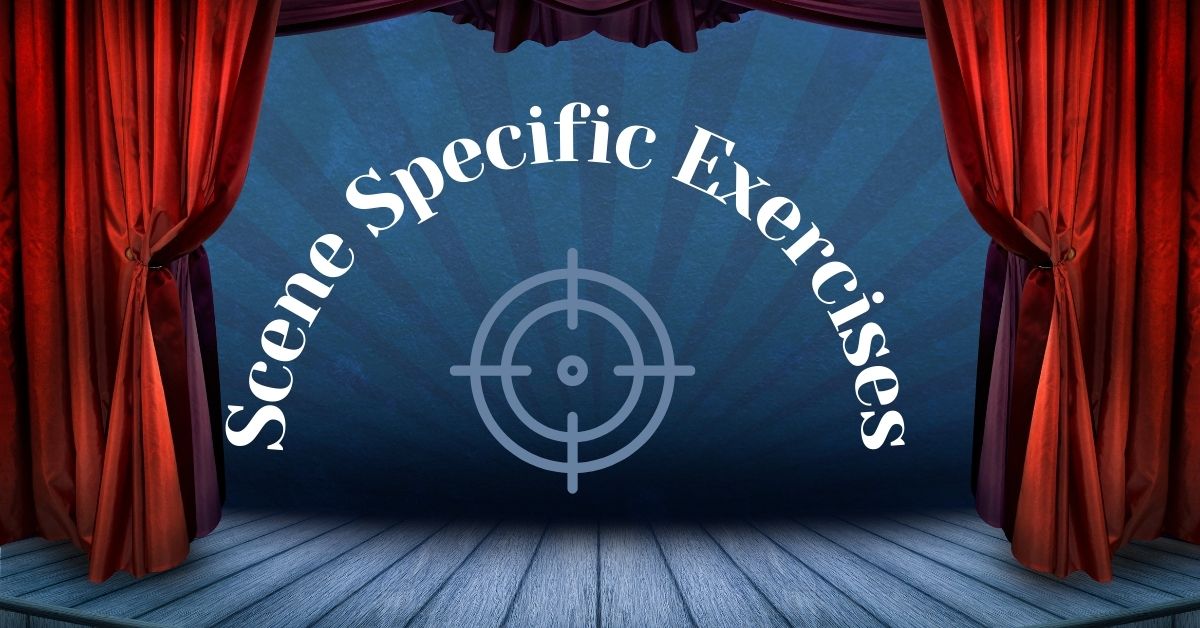Problem-Solving Exercise: Last Minute Fill-In
If you’ve had to deal with more absences than usual, or you’d like your students to learn more about the roles of understudies and swings, or your students just need a good problem-solving challenge, this exercise is for you. Students will receive scripts and prepare a scene to present to the class. However, they won’t know there’s a twist: five minutes before presentations, one of their group members will get switched to another group. What will they do? The show must go on!
This exercise is a good challenge for older or more experienced students. Students will work on good rehearsal techniques and practices, time management, creativity, teamwork, and problem solving.
Optional pre-exercise work: If possible, have students go through the process of receiving a short scene script and working with a small group to learn, block, and present the scene, without any twists or unexpected challenges. You will divide students into small groups of three to five. It will depend on the number of students you have in the class, as each group will need a different short scene script. The scenes can be one page or less, but each group member needs to have lines.
Before class, copy the scripts and assign roles. Hand out the scripts and have students find their group castmates. Give students class time to prepare the scene (performed with script in hand, unless your class is full of fast memorizers) and present it to the class. Once students have had at least one chance to go through this process, you can have them complete this exercise, including the twist. If you are working with more experienced or older students, feel free to jump right into the exercise as written.
Instructions
1. Prep: Select a number of brief scenes (can be one page or less, but you must have enough scenes with enough roles for each student to have lines). Divide students into small groups. It will depend on the number of students you have in the class, as each group will need a different short scene script. For example: Susan, Jake, Sandy, and Priya will present a scene from Alice in Wonderland (playing the roles assigned to them); Josh, Mikhail, Lennon, and Maia will present a scene from Beauty and the Beast; and so on.
Copy the scripts and pre-assign roles. You know your students best, so this is a good opportunity to either challenge students (give a normally shy student a big role, or have a typically boisterous student play a quiet or serious role) or work within their areas of comfort or familiarity (assign roles with more or fewer lines depending on students’ abilities/skill level).
If you have time, you may want to put students’ names/roles and have lines pre-highlighted on each script. This way students can’t try to trade roles. This has the added bonus of students learning to deal with the role they have been cast into.
2. In class, hand out the scripts and have students find their group members.
3. Allot a specific amount of time for rehearsal and announce it to the class — if possible, a minimum of 20 minutes of rehearsal time. The amount of rehearsal time you choose will be dependent on how many groups will need to present and how much prep time you’ll require to hand out scripts and answer questions.
4. Students will use the indicated rehearsal time to learn and block their scenes. The scenes can be presented with script in hand (unless you have a class of quick memorizers).
5. When five minutes are remaining in the rehearsal allotment, sound a timer. Ask for one volunteer from each group. Announce the twist: each volunteer will leave their script behind and move one group over to the right. They will take over the role in the group that was vacated.
6. It’s now the responsibility of each team to get their new group member caught up and on the same track as the rest of the group.
7. After five minutes are up, have each group perform for the rest of the class.
8. If time allows, have students share their thoughts on the process. Here are some suggestions of topics you can discuss:
- What were your thoughts and feelings when you first received your assigned role and group?
- How did your group work together today? What were your group’s strengths and challenges?
- How did you feel when the twist was revealed?
- How might things have gone differently if another volunteer had moved into or out of your group?
- How could this exercise be applied to the real world?
9. At the end of class, each student will complete and submit a reflection (found in the giveaway below).
Extension: If your students are great problem-solvers, or could use some more practice, have them try Problem Solving for Student Directors.



